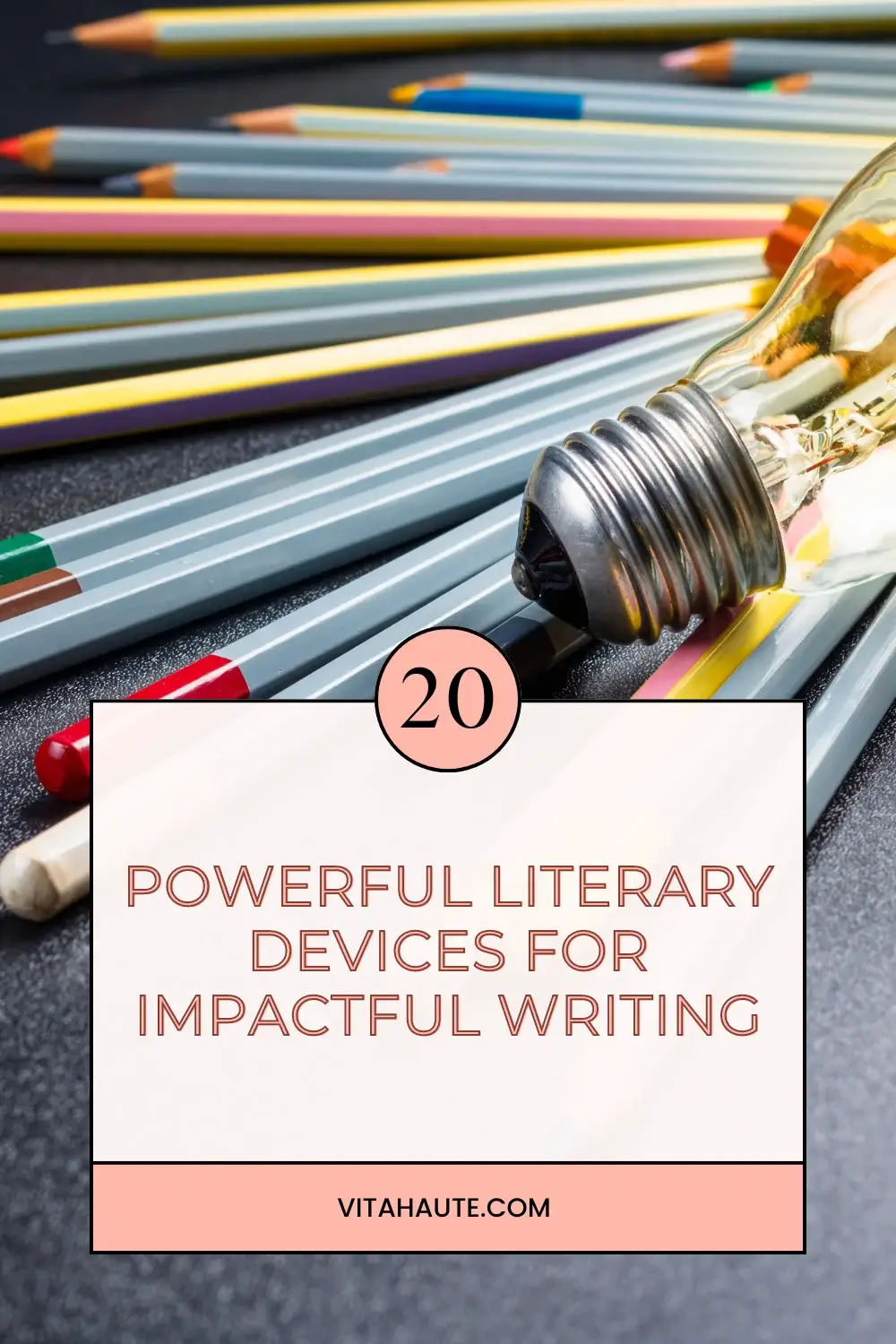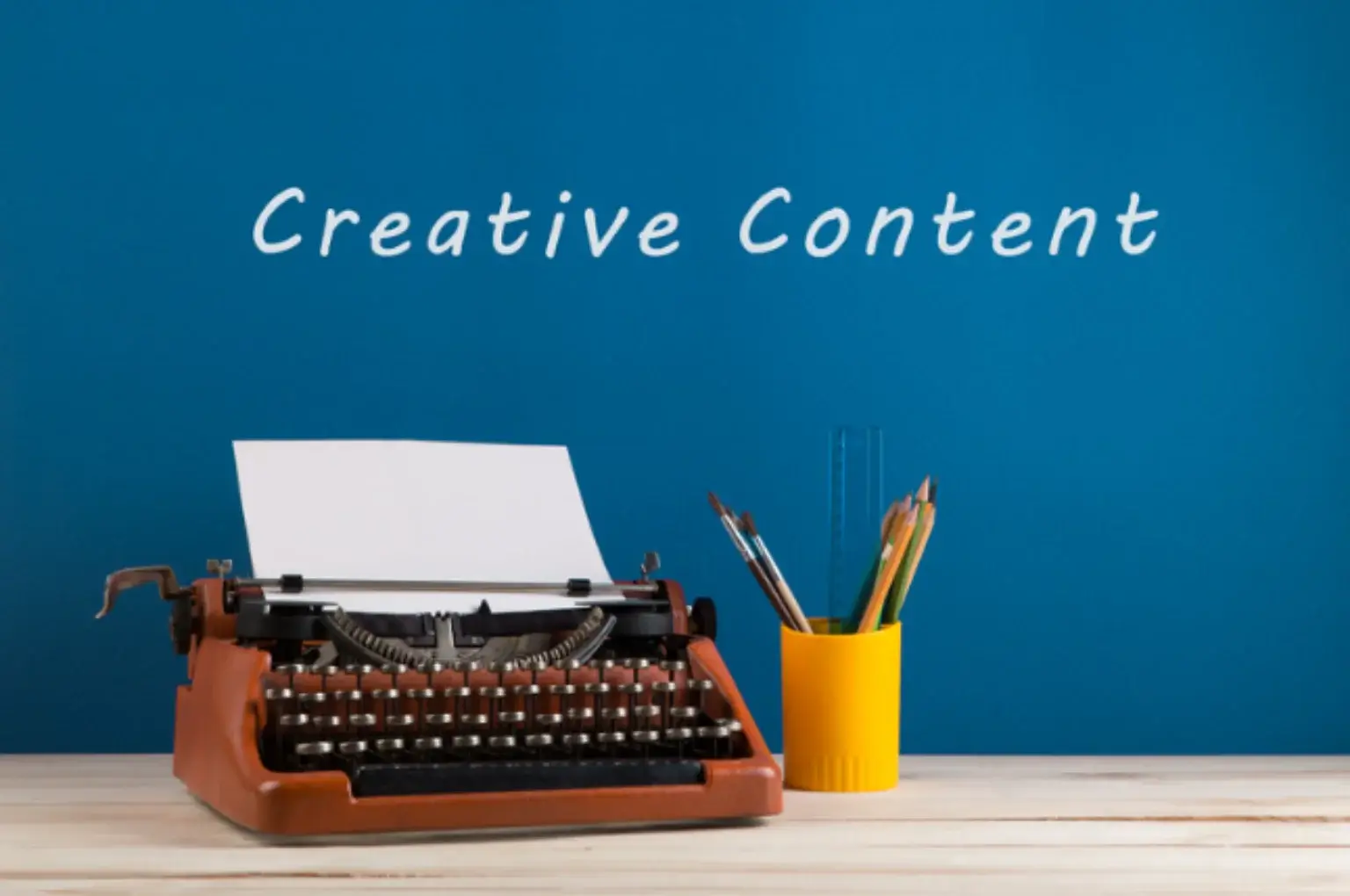At Vita Haute, we’re dedicated to guilding aspiring entrepreneurs along their path, and one of the most crucial skills for any businessperson is the ability to write and persuade others. Effective writing is key to convincing potential clients, partners, and investors of your ideas. Literary devices such as the ones we will explain in this post can help you craft messages that resonate, create lasting impressions, and clearly convey your vision. These techniques not only enhance creativity but also make your arguments more compelling, which is essential in both business writing and other types of writing, such as fiction or even in casual writing.
This post contains affiliate links. Please read our disclosure.
As a fiction writer with short stories published in various anthologies and magazines, as well as a novel under my belt, I’ve spent years honing my craft. I also help fellow short story writers improve their work on a popular online venue, giving me further insight into the tools and techniques that elevate writing.
What You Should Know Before Applying These Techniques
Before diving into the use of these literary devices, it’s important to understand that while they can greatly enhance your writing, they should be used thoughtfully and in moderation. Overusing any single technique can lead to redundancy and weaken the impact of your message.
Also, remember that context matters—what works in a piece of fiction might not have the same effect in a business proposal. Each device should serve a purpose, whether it’s to clarify a point, evoke emotion, or add rhythm to your writing.
Finally, practice is essential. The more you experiment with these techniques, the more naturally they will come to you, allowing you to use them effectively without forcing them into your work.
I would also add that a strong vocabulary would not hurt. One of my favorite books is Word Power Made Easy: The Complete Handbook for Building a Superior Vocabulary by Norman Lewis. The book was gifted to me many years ago when I was in the fifth grade, and it taught me a lot about word origins. Whenever I encountered a word I didn’t understand, because I knew many suffixes in Greek and Latin, I could often determine its meaning. But more than just educating me, it also inspired me to learn as much as I can about the beautiful English language.
Keep in mind as well that with practice, you may get a technique wrong. That’s okay. Keep trying. The more you practice, the better you’ll become. Reading is also paramount. You’ll encounter examples of these techniques in books, magazines, and other types of literature, and then you’ll be able to better understand how they’re used so that you can apply them in your own communications.
Now that we’ve explored the importance of these literary techniques and how to approach them, let’s delve into each one, with examples, so that can begin applying them across different types of writing.

1. Consonance
Consonance is the repetition of consonant sounds in close proximity within a sentence or phrase.
Example:
“The ship has sailed to the far-off shores.”
2. Assonance
Assonance is the repetition of vowel sounds within nearby words.
Example:
“The light of the fire is a sight to admire.”
3. Metaphors
Metaphors describe something by asserting that it is something else, often to illustrate a point.
Example:
“Time is a thief that steals our moments.”
4. Similes
Similes compare two different things using “like” or “as” to highlight similarities.
Example:
“Her smile was as bright as the sun.”
5. Rhyme
Rhyme is the repetition of similar or identical sounds at the end of two or more words.
Example:
“The cat in the hat sat on a mat.”
6. Alliteration
Alliteration is the repetition of the same initial consonant sound in closely placed words.
Example:
“Peter Piper picked a peck of pickled peppers.”
7. Personification
Personification gives human traits to non-human entities or objects.
Example:
“The wind whispered through the trees.”
8. Hyperbole
Hyperbole is an exaggerated statement not meant to be taken literally, used for emphasis or effect.
Example:
“I’ve told you a million times to clean your room.”
9. Onomatopoeia
Onomatopoeia uses words that imitate the sounds they represent.
Example:
“The bees buzzed in the garden.”
10. Oxymoron
Oxymoron is a combination of contradictory terms to create a paradoxical effect.
Example:
“Deafening silence”
11. Juxtaposition
Juxtaposition places two contrasting elements close together to highlight their differences.
Example:
“It was the best of times, it was the worst of times.”
12. Symbolism
Symbolism uses symbols to signify ideas and qualities, giving meaning beyond the literal.
Example:
“A dove symbolizes peace.”
13. Anaphora
Anaphora is the repetition of the first part of a sentence or clause to create emphasis.
Example:
“Every day we remember. Every day we fight. Every day we strive.”
14. Metonymy
Metonymy replaces the name of something with the name of something else closely related to it.
Example:
“The White House issued a statement.”
15. Synecdoche
Synecdoche uses a part of something to represent the whole, or vice versa.
Example:
“All hands on deck.”
16. Chiasmus
Chiasmus is a rhetorical device where two or more clauses are balanced against each other by reversal of their structures.
Example:
“Ask not what your country can do for you—ask what you can do for your country.”
17. Irony of Situation
Irony of situation occurs when there is a discrepancy between what is expected and what actually happens.
Example:
“A fire station burns down.”
18. Epiphora
Epiphora is the repetition of the last part of a sentence or clause to create emphasis.
Example:
“I want to get better, I need to get better, I will get better.”
19. Euphemism
Euphemism uses mild or indirect expressions to replace harsh or blunt ones.
Example:
“He passed away” instead of “He died.”
20. Parallelism
Parallelism uses the same grammatical structure in a series of phrases or sentences to create rhythm and clarity.
Example:
